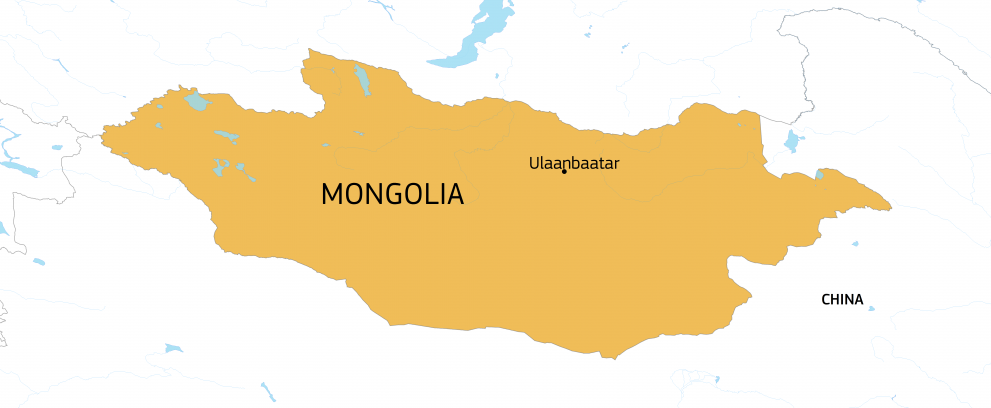Mongolia
Factsheet

Page Content
Introduction
Mongolia is vulnerable to a wide range of natural disasters, including floods, dust storms, droughts, wildfires and earthquakes. These events have an adverse impact on people’s lives and livestock, which is the key source of food, transport, and income for many Mongolian families. Because of climate change, the frequency of these hazards has increased in recent years, often overstretching the government’s response capacity. A rapid, yet unplanned, urban development further increases the country’s vulnerability.
What are the needs?
Close to half of Mongolia’s three-million population lead a nomadic life and depend entirely on livestock for a living. A prolonged dry summer drought followed by a harsh winter often leads to the death of a large number of animals, threatening the survival of herder families, especially in remote and rural areas. During this slow-onset climatic phenomenon, unique to Mongolia and locally known as 'dzud', temperatures can drop to as low as -50°C across the country. Mongolia experienced two consecutive dzud events in 2016 and 2017, which left more than r a million animals dead and threatened the livelihoods of hundreds of thousands of people. The increasing frequency of the event has been attributed largely to the impact of climate change and the overgrazing of the Mongolian steppes.
The sparsely populated country is the size of western Europe and has poor transport infrastructure. Providing assistance is a challenge as many families live in their own compounds and are constantly on the move, with herders seeking better grazing for their animals.

How are we helping?
In 2016 and 2017, a series of dzud events severely hampered the capacity of isolated families to access food and livelihood resources while devastating livestock herds. The European Union allocated €535 000 to bring immediate relief to the hardest-hit families and provide emergency food assistance to the most vulnerable households. In addition, first-aid kits and cash grants were distributed to enable affected herders to maintain their physical well-being in particularly challenging weather conditions and cover other immediate needs following their own priorities.
In 2012, the EU delivered urgent humanitarian aid to 5 600 people living in difficult social conditions because of the dzud. The project provided, among others, shelter support, basic household items, winter clothing and psycho-social care to thousands of families.
The dzud of 2009-2010 had a severe impact throughout the country, killing an estimated 8.5 million animals and leaving some 500 000 people - more than 18 percent of the population - at risk. The EU provided €2.15 million in humanitarian aid, which reached 46 000 people affected by the -50°C temperatures. The EU's funding supported the delivery of emergency food, blankets, warm clothing, and fodder supplies and storage facilities to help affected households to secure the survival of their livestock. Around 45 000 people were estimated to have lost all their livestock and some of them were forced to migrate to urban areas, where many faced difficulties adjusting and often ended up in chronic poverty. EU-funded projects delivered food, health and social assistance to the affected people as well as vocational training so that newly urbanised households could adapt to their new environment by accessing job opportunities. Particular attention was also paid to supporting the accommodation and hygiene of 5 000 boys and girls in 34 public education institutions. This ensured that children of destitute herders received an education and were not pushed into forced labour to support their families.
Since 2016, the EU has provided a total of €1.1 million for disaster preparedness activities in Mongolia. By enhancing disaster management capacities, the projects aim to strengthen the ability of herder communities in rural areas to respond to future natural hazards while improving the preparedness of state institutions in the face of medium- to large-scale disasters in densely populated areas in the capital Ulaanbaatar. The funding also focuses on raising public awareness for urban disasters and increasing school safety.
Facts & figures
EU humanitarian funding:
More than €10 million since 1994
© European Union/ECHO/Maria Olson
Links
ECHO photos from Mongolia
https://www.flickr.com/photos/69583224@N05/collections/7215764535875217…
EuropeAid
https://ec.europa.eu/europeaid/countries/mongolia_en
